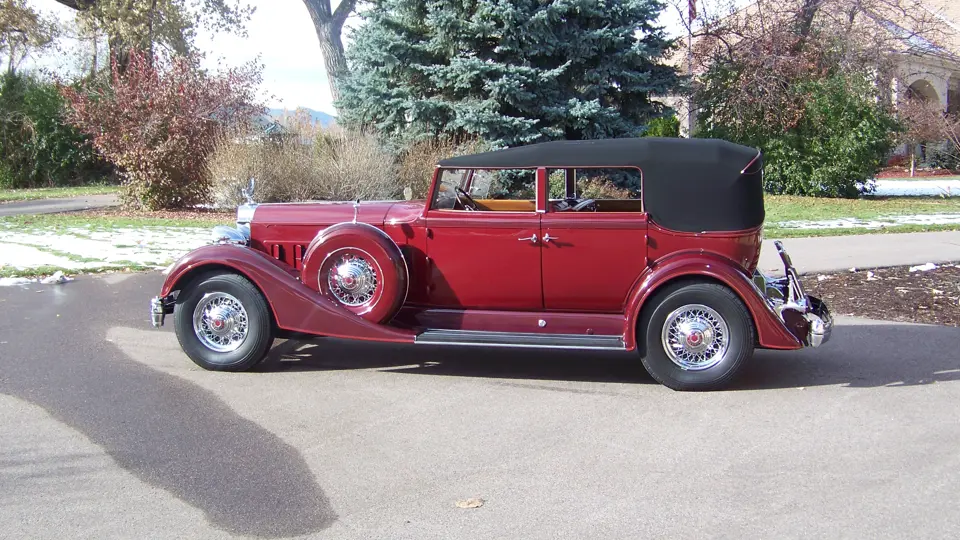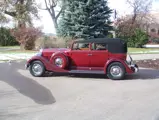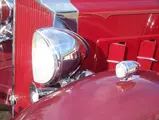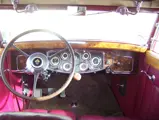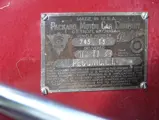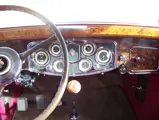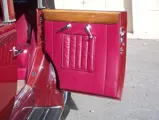Series 1107. 160 bhp, 445.5 cu. in. L-head V-12 engine, three-speed manual transmission, front and rear semi-elliptic leaf spring suspension, and four-wheel power-assisted mechanical drum brakes. Wheelbase: 141.875"
• Powerful and prestigious Packard V-12
• Elegant wood and leather interior
Packard discontinued its first V-12, the massive Twin Six, after 1923, replacing it with the smaller Single Eight which outperformed it. After Cadillac brought out a V-16 in 1930, however, and then a V-12, Packard was drawn back into the cylinder race. The response was a new Twin Six—one with no resemblance to the old.
The new car was powered by a 445.5-cubic inch V-12, making 160 bhp at 3,200 rpm. Designed by Cornelius Van Ranst, whose credits included the Cord L-29, the V-12 was originally intended for a front-wheel drive Packard, a project that was stillborn due to engineering problems with the front drive chassis. The engine survived, however, transplanted to the chassis of the Deluxe Eight. A narrow, 67-degree vee, it was of unusual configuration with valves nearly horizontal, actuated by hydraulic tappets. The combustion chamber was partially in the block, giving rise to the description “modified L-head.” A Stromberg dual throat downdraft carburetor (the first downdraft on a Packard) fed it fuel, which was supplied by a Stewart-Warner pump. The transmission had only three speeds, but by mid-year all Packards would be so equipped. The earlier four-speed gearboxes were not really required in cars that seldom required shifting. Packard claimed a top speed “in excess of 85 mph,” but the Twin Six was reportedly capable of 100 in all body styles, which ranged from plebeian sedans and coupes to “Individual Custom” bodies, six of which were by Dietrich. Each car came with a Certificate of Approval signed by a Packard engineer, attesting to a 250-mile break-in run after which all necessary adjustments had been accomplished.
In retrospect, the introduction of a marquee motor car in the depths of the Depression may seem like sheer lunacy, but there was a certain logic to it. Development of the engine was substantially complete before the crash, and the rest of the car was based on the Deluxe Eight, so there was little additional cash outlay required. Moreover, multi-cylinder cars were plentiful in the marketplace, as Cadillac had introduced V-12 and V-16 cars in 1930, and arch rival Pierce-Arrow had a 12 in the works for 1932, as did Lincoln. Struggling Marmon, moreover, had staked its fortunes on a V-16 in 1931, which would prove its undoing. Not to have fielded the Twin Six would have put Packard at a severe disadvantage with those who could still afford a luxury car and didn’t mind flaunting it. Ostensibly, the profit margin on such a car could well justify its manufacture, but prices, body for body, were only $100 to $150 above those of the Deluxe Eight. In that respect, the Twin Six was a real bargain, due mainly to the shortened model year. Only 549 were sold.
For 1933 the line was re-christened “Packard Twelve,” and while the marketing was just as ambitious, the results were nearly the same as the previous year, with 540 cars built, although this was again a shortened model year. Finally, in 1934 the market improved, and sales increased substantially, although at 788 cars ownership remained very exclusive.
This Series 1107 Convertible Sedan was delivered on October 11, 1933 by Vail Brothers, the Packard dealership at rural Peconic on the North Fork of New York’s Long Island near Shelter Island. In the 1960s it was owned by Sterling Eugene Walsh. In 1968, it was purchased by Walter Cunny, owner of Falls Motors, Limited in Genoa, Illinois, who maintained a large collection. Cunny also owned the Toro Lawn Mower company. The current owner bought the car in 1994 from the Cunny Estate. Restored by Cunny in the 1970s, it remains lovely in dark red with red leather and has a tan-lined black top with red piping, replaced just three years ago. The interior remains excellent, the gauges have recently been rebuilt, and the radio and all lights work perfectly.
The car is outfitted for touring, its principal activity in recent years. It is fitted with radial blackwall tires on chrome wire wheels, the dual side-mount spares fitted with metal covers. It has seat belts for safety, a high-speed rear axle, an electric fuel pump with inline fuel filters and dual Optima batteries for reliability. Turn signals have been neatly integrated into the car’s existing lights. Close inspection shows some very minor nicks and scratches to the paint, which have been touched up so the car presents well. The engine compartment is clean and nicely detailed, and the undercarriage is of the same caliber, despite the fact that the car is toured regularly.
It represents the best of both worlds: a car that can be shown with pride yet driven with confidence on local or long-distance tours. The veteran of many Classic Car Club of America CARavans, it is a lovely and versatile car with the benefit of 12-cylinder power and spacious convertible sedan coachwork.

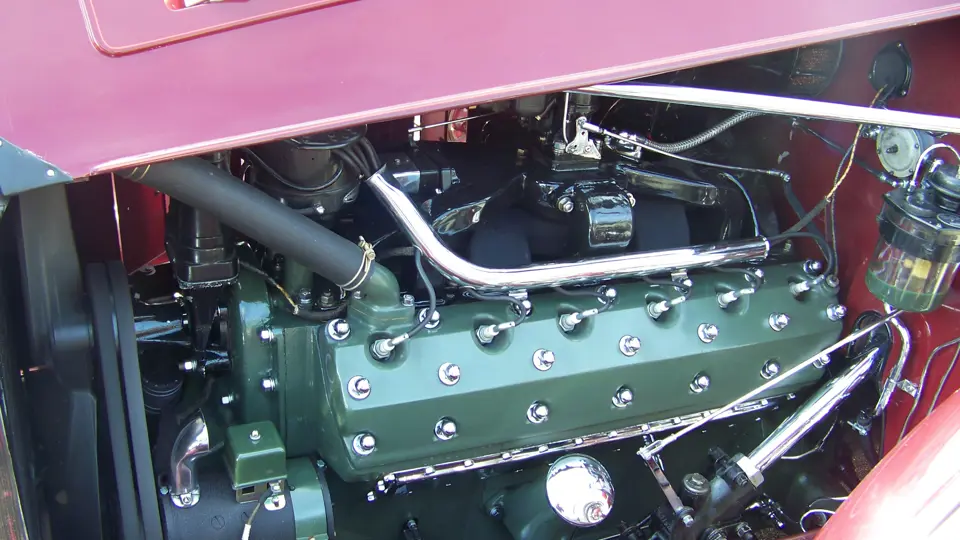


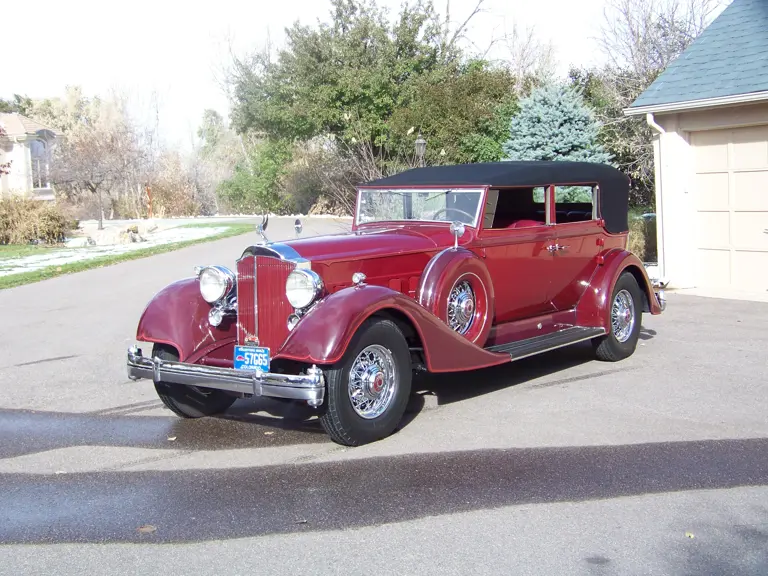

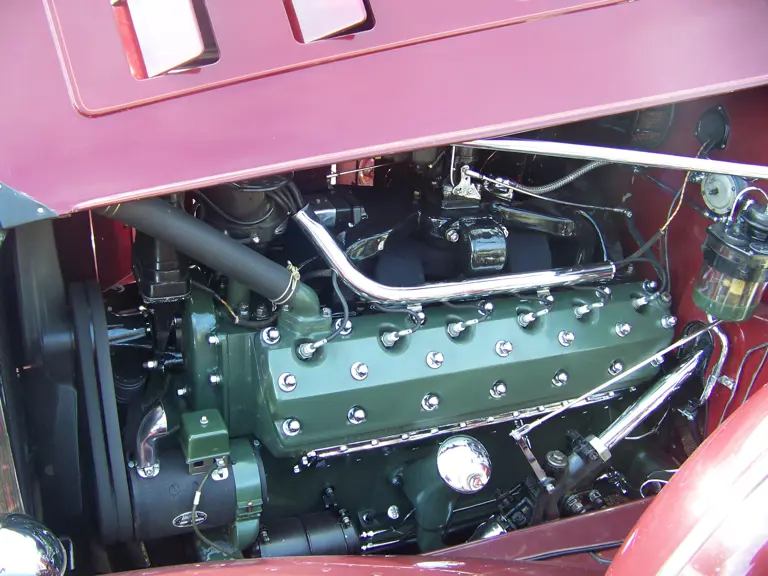
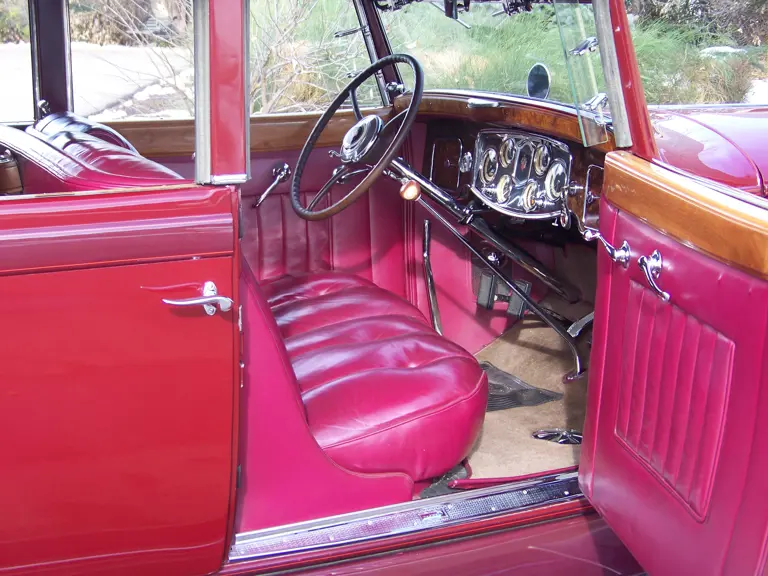
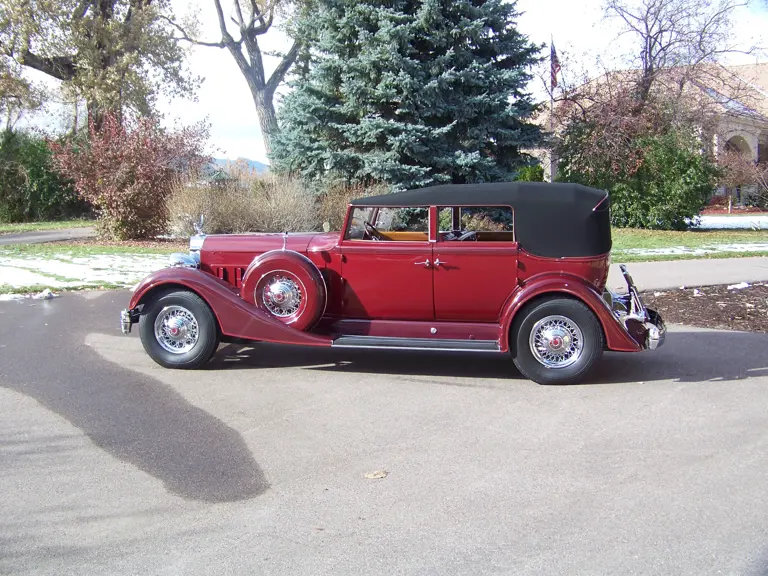
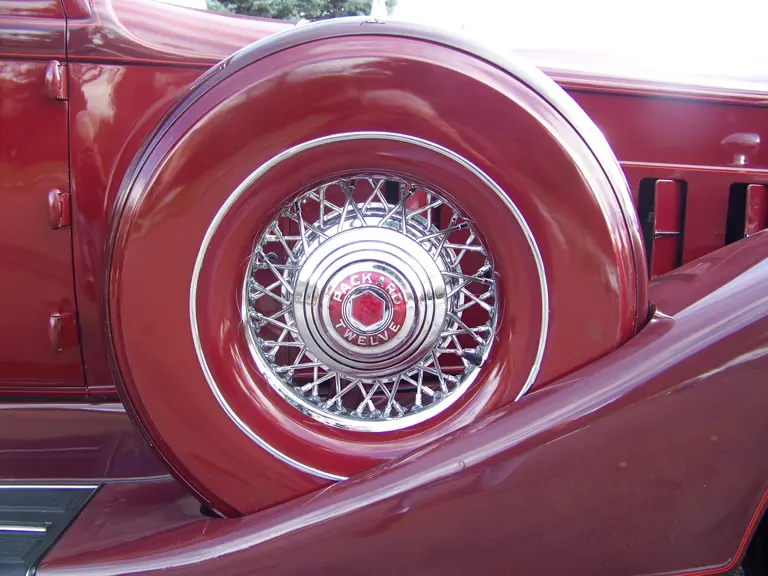
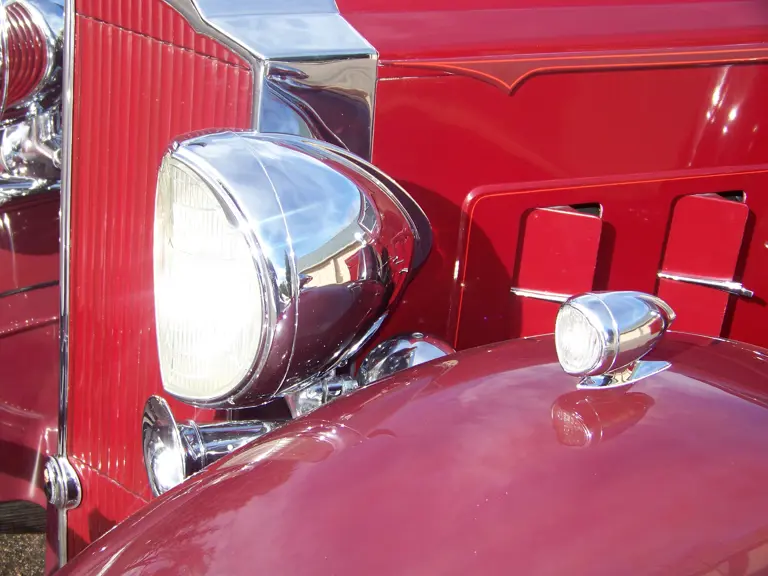


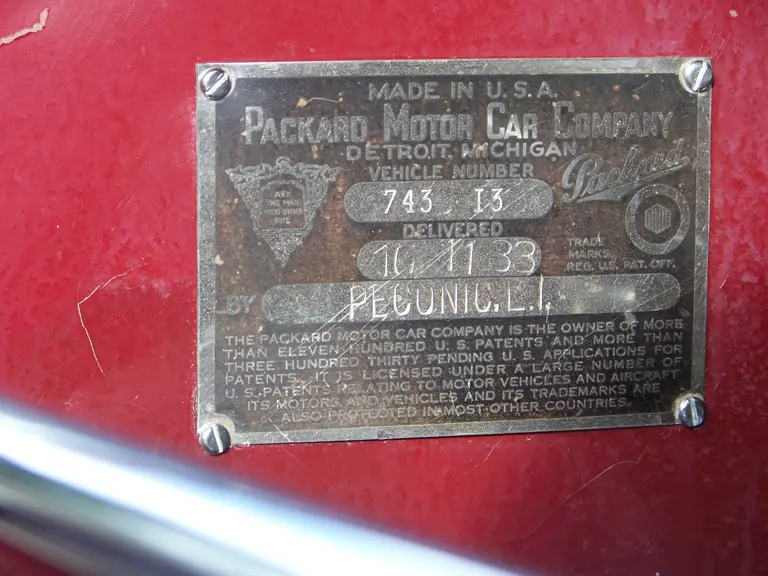
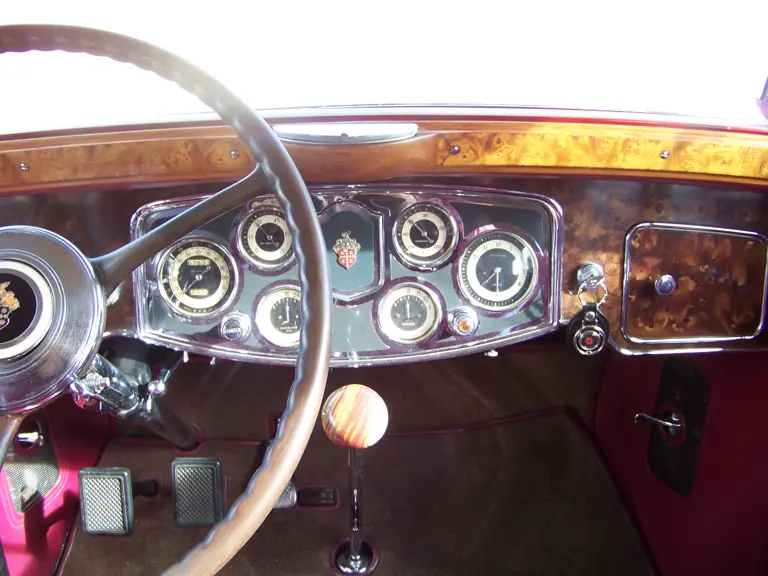
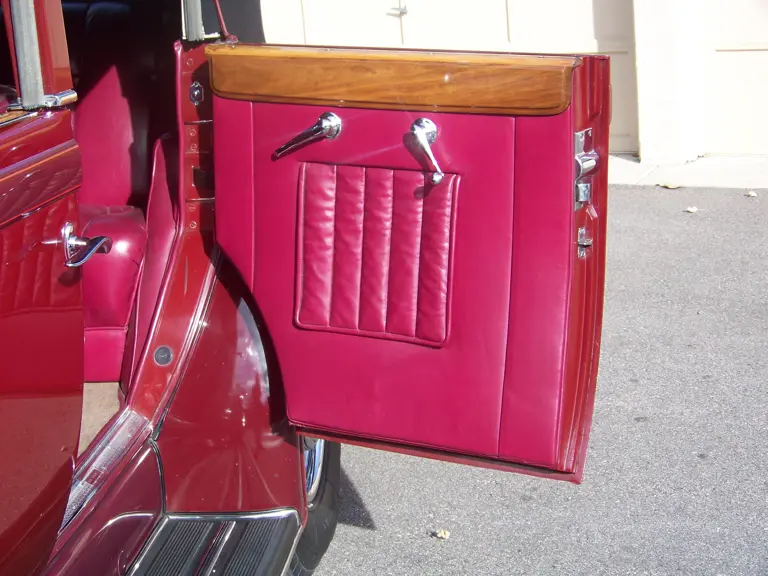
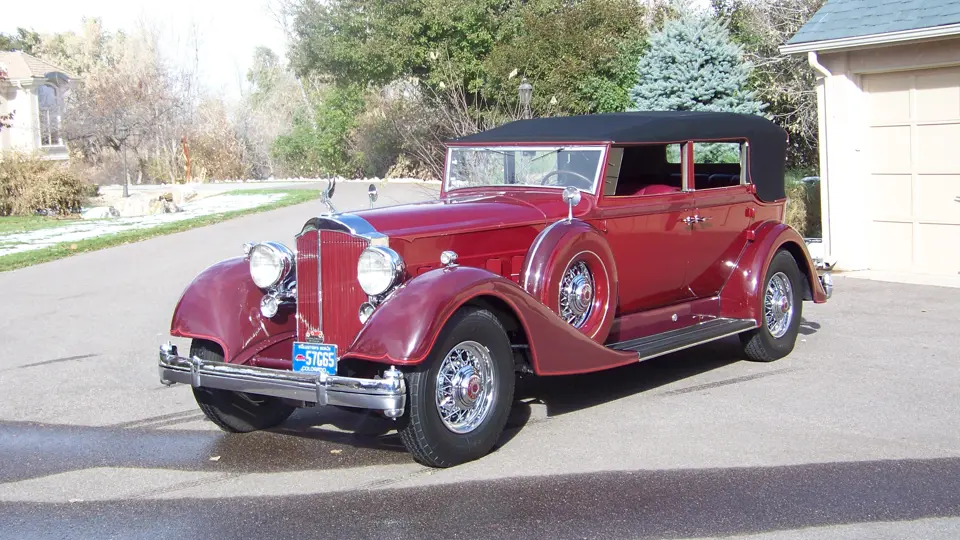
 | Phoenix, Arizona
| Phoenix, Arizona
